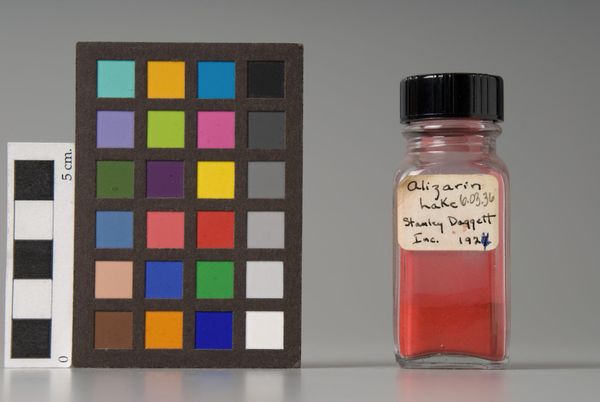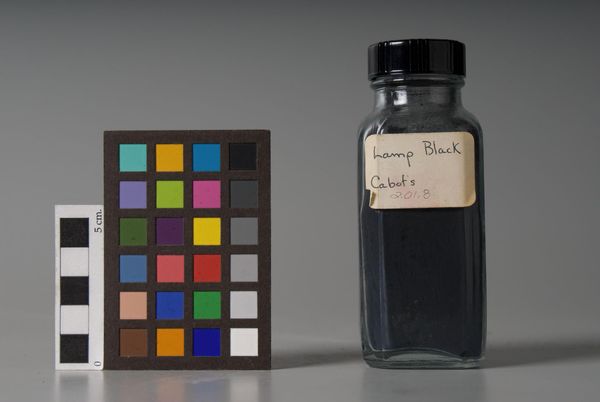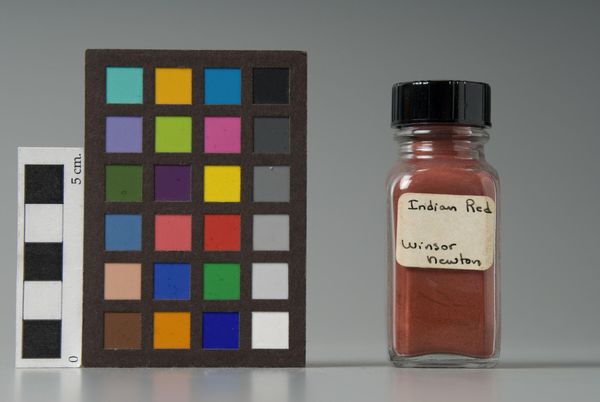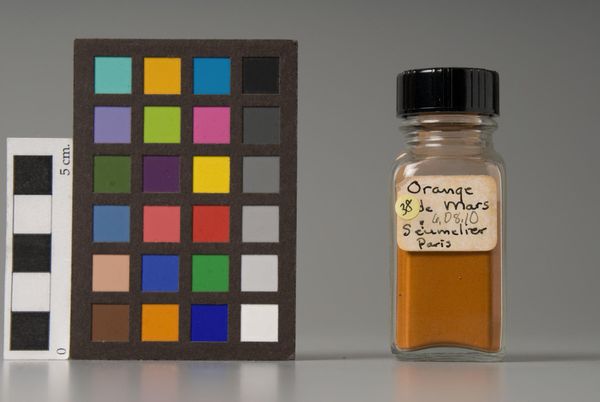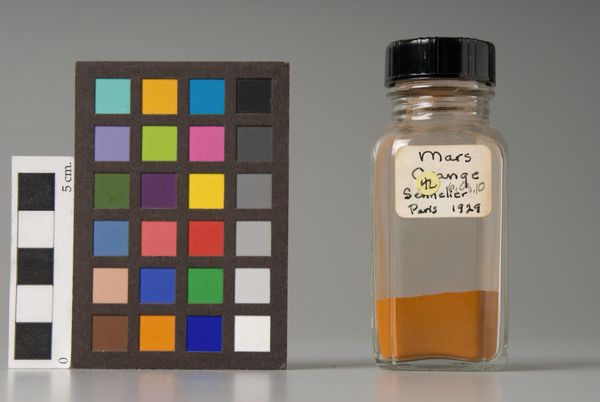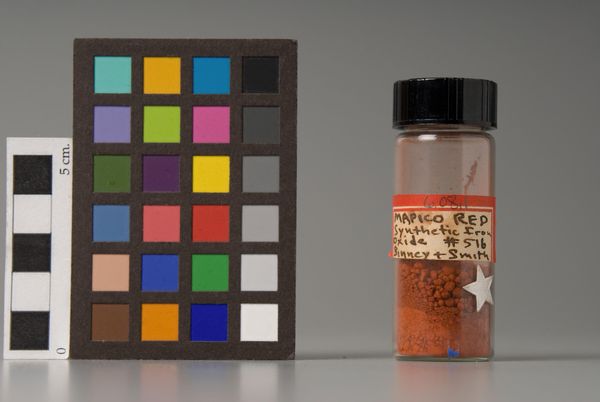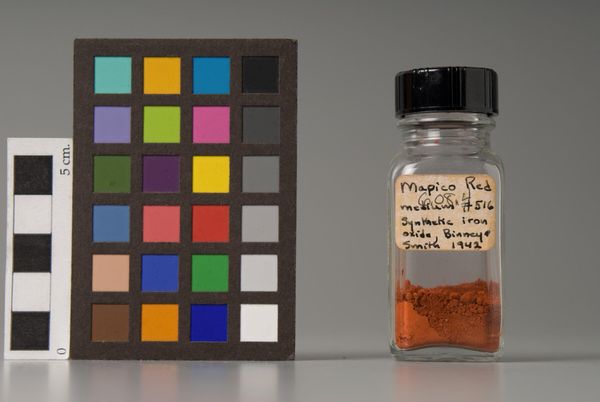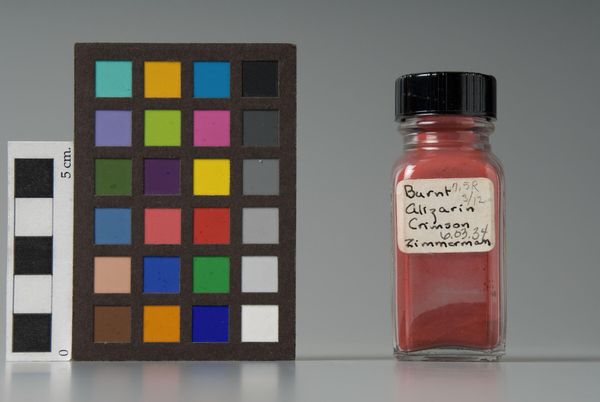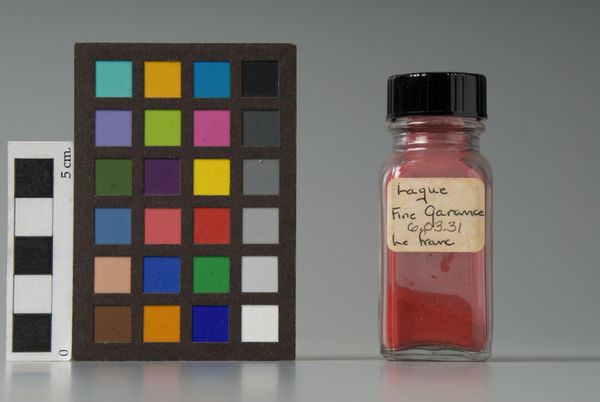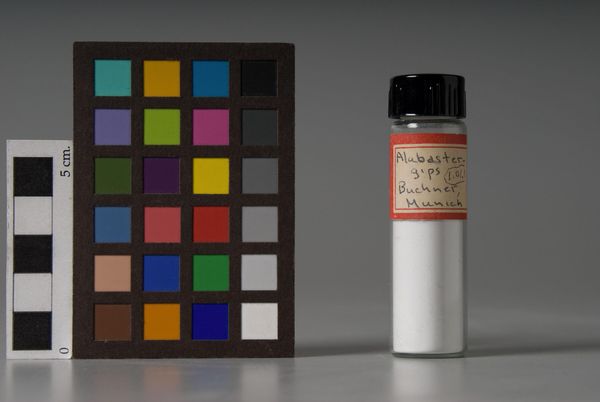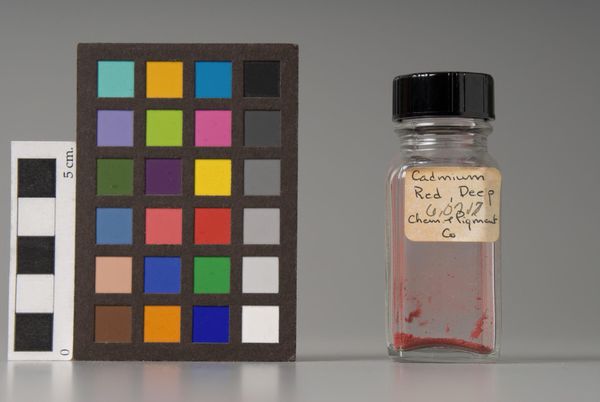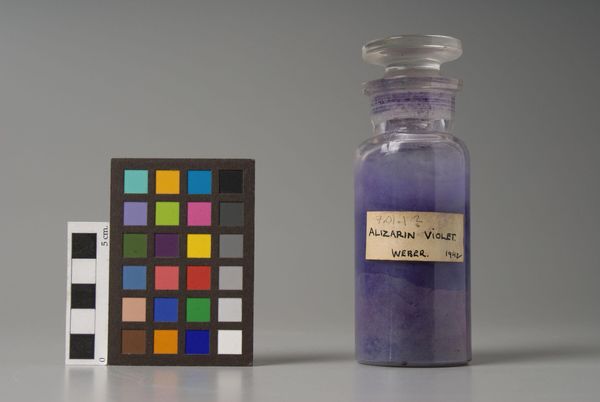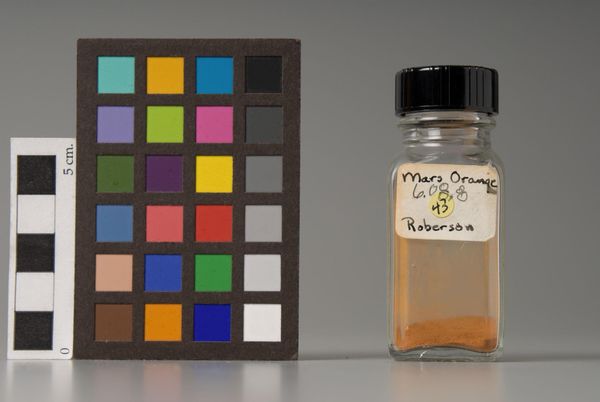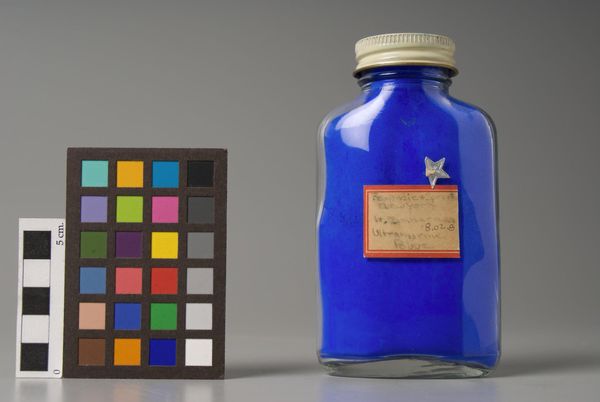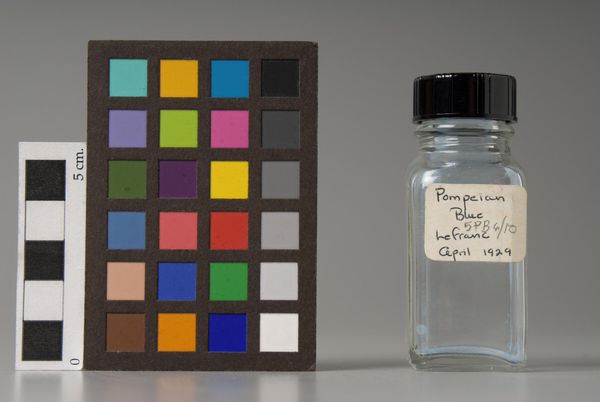
Copyright: CC0 1.0
Did you know that the human eye can see more shades of green than any other colour? This is thought to be an evolutionary feature which would have allowed our ancestors to differentiate between prey and food in rural habitats. Synthetic (man-made) pigments boomed in popularity during the nineteenth century. With the rise of industrial manufacturing, pigments could be produced quickly and in mass quantities. Prior to this, pigments had often been expensive and time-consuming to create. This is Chromium Oxide Green. The pigment was first produced in 1798, originally intended as a glaze for porcelain. It quickly became adopted by painters. J.M.W Turner was using chromium oxide green as early as 1812! This specific vial of pigment was produced in 1941 by the New York-based company Imperial Paper and Colour Corporation. They specialised in wallpapers and paint manufacture. Today, the bottle is housed in Harvard Art Museums. It offers a glimpse into the hidden world behind the colours we see so often in art. This pigment is opaque, meaning light cannot pass through. This makes it light-resistant and hardwearing. The pigment is especially versatile, and is often mixed with yellow or white for use in landscape painting. If you’ve ever seen foliage or plants in oil paintings, there’s a good chance you’ve seen chromium oxide green! Interestingly, the pigment was even used for five-dollar bills in the United States. The bold colour was less easily replicated than standard black, meaning it helped to prevent fraud. The colour is still associated with money! Chromium oxide is common in paint sets even today, though it is known to be less vibrant than other newer pigments. It’s also used in makeup, including nail paints and eyeliners. Cool, right?
Comments
No comments
Be the first to comment and join the conversation on the ultimate creative platform.
